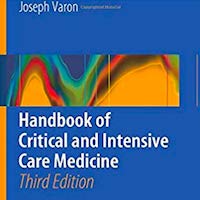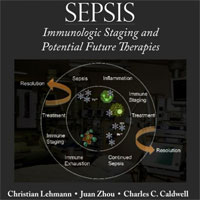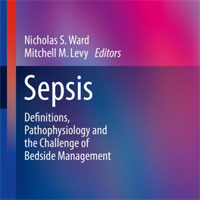Tag: mortality
1-year Mortality After COVID-19 ICU Admission
Severe acute respiratory syndrome coronavirus 2 (SARS-CoV-2) infection causes severe disease in some patients. Patients can experience severe disabilities after intensive care unit (ICU) admission due to coronavirus disease... read more
Hypothermia and Health-related Quality of Life Among Pediatric Cardiac Arrest Survivors
Out-of-hospital or in-hospital cardiac arrest treated with therapeutic hypothermia was associated with higher health-related quality of life scores despite having association with higher lactate and lower pH after resuscitation.... read more
Subclavian vs. Femoral Arterial Cannulations During ECMO
During peripheral extracorporeal veno-arterial membrane oxygenation (VA-ECMO) support, subclavian arterial cannulation provides, in comparison to femoral arterial cannulation, an anterograde flow which may prevent from left... read more
Evaluating Vitamin C in Septic Shock
Vitamin C monotherapy failed to significantly reduce mortality in septic shock patients as hypothesized. Our findings do not support its routine clinical use for this purpose. Of 124 subjects receiving study drug and included... read more
Hypocalcemia Association with In-hospital Mortality and Complications in Patients with Acute Pulmonary Embolism
Pulmonary Embolism (PE) patients with hypocalcemia have higher in-hospital mortality than those without hypocalcemia. The in-hospital complications were also higher, along with longer length of stay. In the 2017 NIS, 187,989... read more
Association of Volume Status During VV ECMO with Outcome
Fluid overload in acute respiratory distress syndrome is associated with increased mortality. The purpose of this study was to investigate the association of cumulative fluid balance (CFB) during the first 7 days of eno-venous... read more
Early Mortality Prediction in Sepsis Patients Using Structured Features and Unstructured Clinical Notes
Sepsis is an important cause of mortality, especially in intensive care unit (ICU) patients. Developing novel methods to identify early mortality is critical for improving survival outcomes in sepsis patients. Using the... read more
Fever is Associated with Reduced Mortality in ICU Patients with Sepsis
To evaluate the association of body temperature with mortality in septic patients admitted to the ICU from the ward. In addition, we intend to investigate whether the timing of antibiotic administration was different... read more
Vasopressor Initiation within 1 Hour of Fluid Loading is Associated with Increased Mortality in Septic Shock Patients
Vasopressor initiation within 1 hour of fluid loading was associated with higher 28-day mortality in patients with septic shock. The median time from the initial fluid bolus to vasopressor was shorter in the early group... read more
Dynamic Prediction Tool for Mortality in COVID-19 Ventilated Patients
The COVID-19 pandemic has caused intensive care units (ICUs) to reach capacities requiring triage. A tool to predict mortality risk in ventilated patients with COVID-19 could inform decision-making and resource allocation,... read more
HSV-1 Reactivation Associated with Increased Mortality Risk and Pneumonia in COVID-19 Patients
Critically ill COVID-19 patients frequently reactivate HSV-1 but not HSV-2. HSV-1 reactivation in critically ill COVID-19 patients was associated with an increased risk of day-60 mortality and hospital-acquired pneumonia... read more
UK 28-Day Mortality Trends of COVID-19 Patients
There was a marked deterioration in outcomes for patients admitted to critical care at the peak of the second wave of coronavirus disease 2019 in United Kingdom (December 2020–January 2021), compared with the post-first-wave... read more
The Obesity Paradox in Critically Ill Patients
A causal inference approach that is robust to residual confounding bias due to model misspecification and selection bias due to missing (at random) data mitigates the obesity paradox observed in critically ill patients, whereas... read more
Evolution of Inexpensive Videolaryngoscopy
Not many procedures in Medicine have received the attention and focus of medical practice, especially in critical care, as laryngoscopy. A secure airway serves as a lifeline to the critically ill, yet the process of securing... read more
Serum Sodium and In-Hospital Mortality in Critically Ill Patients
In this large multicenter observational cohort study of ICU patients, we aimed to assess the independent association of changes in serum sodium in the first 48 hours of ICU admission with in-hospital mortality for patients... read more
Mortality and Clinical Characteristics of MIS-C Associated with COVID-19
The clinical presentation and severity of Multisystem Inflammatory Syndrome in Children associated with COVID-19 (MIS-C) is widespread and presents a very low mortality rate in high-income countries. This research describes... read more
Dynamic Delirium Severity Trajectories and Healthcare Utilization
This secondary analysis did not identify a significant relationship between delirium severity trajectories and healthcare utilization or mortality within 2 years of hospital discharge. The overall sample (n = 431) had... read more
Critical Illness in Patients with Hematologic Malignancy
Critical illness in patients with a newly diagnosed hematologic malignancy is frequent, occurring early after diagnosis. Certain baseline characteristics can help identify those patients at the highest risk. A total of... read more
COVID-19-related Death in Fully Vaccinated People in Scotland – Characteristics and Risk
Vaccines are highly effective in preventing COVID-19 hospitalisations and deaths. COVID-19-related deaths in fully vaccinated individuals have, however, been reported. To inform public health strategy and vaccination... read more
The Use of Different Sepsis Risk Stratification Tools Uncovers Different Mortality Risks
Our data suggest that the sepsis risk stratification tools currently utilized in emergency departments and on the general wards do not predict mortality adequately. This is illustrated by the disparity in mortality risk... read more
Effect of Moderate vs Mild Therapeutic Hypothermia on Mortality and Neurologic Outcomes in Comatose Survivors of Out-of-Hospital Cardiac Arrest
In comatose survivors of out-of-hospital cardiac arrest, a target temperature of 31 °C did not significantly reduce the rate of death or poor neurologic outcome at 180 days compared with a target temperature of 34 °C. However,... read more
Time Course of Risk Factors Associated with COVID-19 Mortality
The present multicentric study describes 1,260 critically ill patients with COVID-19-associated acute respiratory failure consecutively admitted to 24 Italian ICUs during the first pandemic wave. This study specifically... read more









